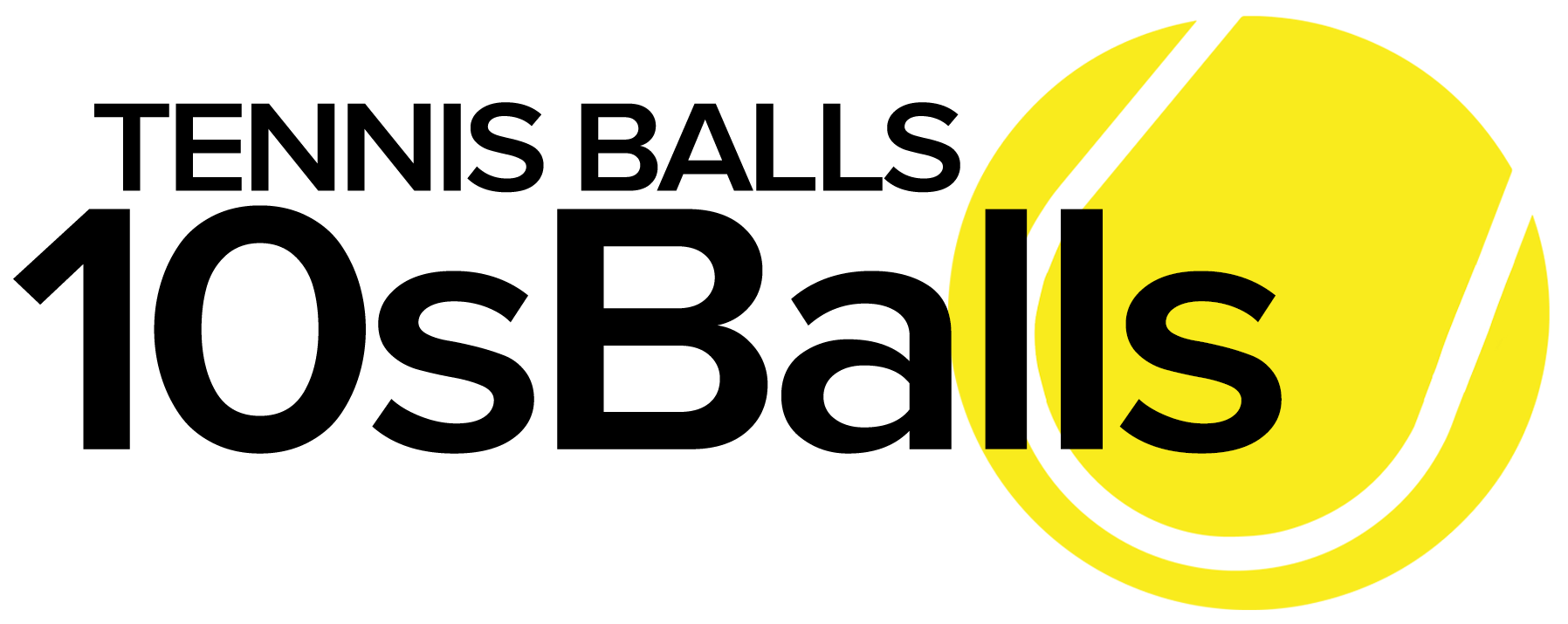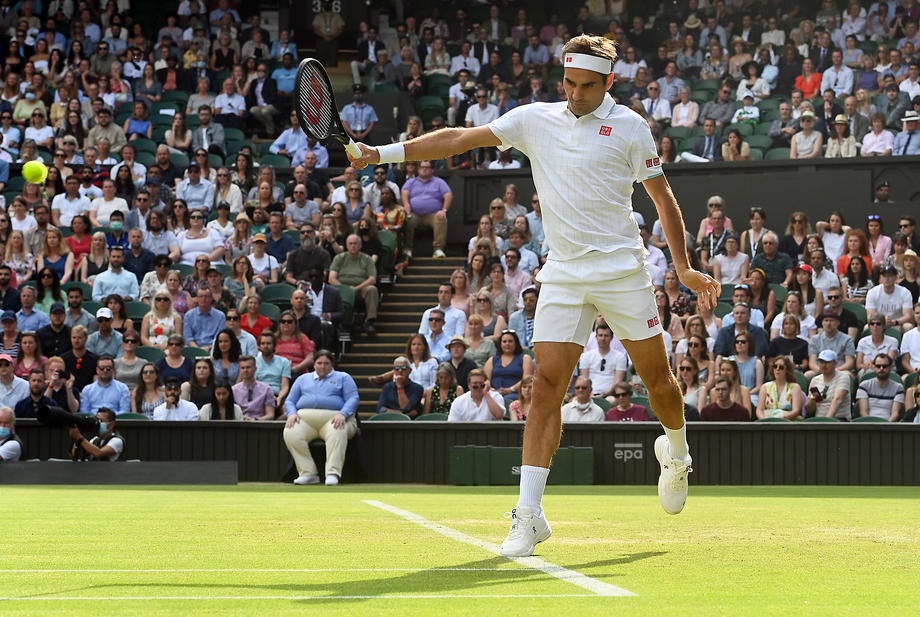- Stars Join Forces for Eisenhower Cup Return to Indian Wells on March 4
- Ken Thomas Broadcasting from Georgia’s Rome Tennis Open
- Solinco Launches All-New Whiteout V2 Racquet
- Stringlet: Serving Up Tennis Inspiration With A Twist
- Davis Cup qualifying to feature Brazil vs. France and Spain vs. Switzerland
- 2025 US Open Expands to Sunday Start
- Tennis Channel To Broadcast U.S. Davis Cup Qualifier vs. Tawain
- Stefanos Tsitsipas Receives Rotterdam Wild Card From Richard Krajicek
- Tien and Basavareddy to Play Delray Beach Open Qualifying
- Australian Open Tennis 2025 Ends with Madison Keys and Jannick Sinner As Winners By Alix Ramsay
- 2025 Australian Open Final Draws
- Jannik Sinner Sweeps Alexander Zverev for Second Straight Australian Open Title
- Ricky’s pick for the Australian Open final: Sinner vs. Zverev
- Australian Open Draws and Order Of Play for Sunday, January 26, 2025
- Madison Keys Upsets Defending Champion Aryna Sabalenka in Australian Open Final Thriller
Tennis News • U.S. Open This Year ? Only If There Is Fairness For All
- Updated: June 6, 2020

By Alix Ramsay
Rafa doesn’t want to go; Roger can see no point in going and Petra thinks the only advantage in going is that she won’t have to wear make-up. The US Open 2020 is not exactly selling itself to the top players. It’s not really selling itself to any of the other players, either.
This week, the New York Times (and the excellent Chris Clarey) published its exclusive revealing the contingency plans being made by the USTA to hold the Open behind closed doors – and it made for grim reading: no fans, potentially no doubles and qualifying and definitely no big entourages. And there is also talk of reducing the men’s event to a best-of-three set format to reduce the injury risks as the players return from months spent in lockdown.

The most startling innovation is to bring the Cincinnati events, men’s and women’s, to New York and hold them at the Billie Jean Tennis Center two weeks before the Open proper is scheduled to begin on August 31. The idea is to minimise travel for the players and to keep them in a Covid-free cocoon somewhere near the tennis site.

To get around the international travel restrictions (and only with the blessing of Homeland Security and the health authorities), players could be brought into the city on chartered planes; they could be housed in official hotels. With access to the locker rooms and practice courts carefully pre-planned and booked, the contact between the players could be kept to a minimum. That will keep the health authorities happy.
That means that after months away from the tour, after months spent observing lockdown restrictions in order to fight the Covid-19 pandemic in their own countries, the players would be asked to travel thousands of miles to visit one of the cities worst affected by the virus and then spend four weeks – possibly more if they have to undergo quarantine on arrival in the US, a matter still to be decided – under virtual house arrest in order to play a tennis tournament. It really doesn’t sound too appealing. That won’t keep anyone happy.
Roger Federer is not a fan and made it clear a couple of weeks ago. “Maybe we wait for the appropriate time to return to normal mode again,” he said. “Or [have] at least a third of the stadium [full] or half full. But for me, completely empty when playing in big tournaments is very difficult.”

His views were backed up by Rafa Nadal on Wednesday. In a Zoom press conference with international journalists, he was anything but keen on heading to the Big Apple to defend his title.
“If you ask me today if I want to travel today to New York to play tennis tournament, I will say no, I will not,” he told the reporters. “In a couple of months, I don’t know how the situation is going to improve. Hopefully going to improve the right way. I am sure that the people who organise the event, USTA, wants a safe event.”

As for Petra Kvitova, she did not fancy the idea of playing to an empty stadium and the only positive she could find was that if no one was watching her, she wouldn’t have to wear her make-up. That said, Karolina Pliskova did not have a problem with a lack of fans – she reckoned most of the women were used to it.

“We can have matches where there is nobody,” Pliskova said. “If you play at 1am, then there’s not many people anyway. Maybe Roger, he never experienced that, but I think me and the girls overall have had experience of nobody [in the stands], or only a couple of people.”

Ah, bless.
Of the four grand slams, only Wimbledon had the presence of mind to take out pandemic insurance. It meant that they could cancel The Championships and not feel the financial pain; it also meant that they could protect the integrity of their event. After all, Wimbledon would not be Wimbledon without the crowds, the Pimms, the audible hush of 15,000 people on Centre Court (occasionally interrupted by the popping of a champagne cork), the celebs in the Royal Box and the doubles, the mixed doubles, the juniors, the legends, the wheelchairs…in other words, the full monty. Because that is what makes a slam.

The US Open is the cash cow for the USTA. Only about a third of its profits come from the 850,000 fans who actually go to Flushing Meadows; the rest comes from TV contracts and broadcast rights. Presumably, though, that two thirds would be considerably reduced if there was only half the tennis to show and there was absolutely no atmosphere (the Premier League – that’s football for us – in England may have to give back millions to the broadcasters due to the way in which the football season will be decided in this Covid world. TV takes no prisoners). Yet with economies around the world going into meltdown due to the pandemic, any cash is welcome.
But none of that matters to Nadal. He wants a fair and level playing field for everyone if the Open is to go ahead at all.
“If we are not able to organise a tournament safe enough and fair enough – when I talk ‘fair enough’, I mean every player from every single part of the world needs to have the chance to play the tournament – [if not] we can’t play tennis. That’s my feeling.

“My feeling is we need to wait little bit more. We are in a worldwide sport. When you mix people from every single part of the world, the complications are completely different. I am a little bit worried about that.”
As one of the world’s top players – and richest players – he does not have to worry about travel and accommodation. He can take private jets; he can afford to stay where he likes. But for the mere mortals of the tour, that is not the case.
Take Salvatore Caruso, the world No.100 from Italy. He has been to the US Open for the past three years, falling each time in qualifying. But this year, he would make the main draw if it were to start next week. Yet in his 10 years on the tour he has won just three hardcourt matches. And one of them was in quallies last year before he crashed and burned.

Would he think it was worth the money to risk quarantine in the US (so a couple of extra weeks to pay in a hotel) and be obliged to stay in one the USTA’s official hotels in order to abide by the strict USTA isolation protocols?
Sure enough, he has made going on for $111,000 this year but he has also had to pay for travel and accommodation on his trips to Doha, Australia, India, Argentina, Brazil and the US. Then there are the expenses for anyone travelling with him such as his fitness coach, Pino Maiori.
Just to give you an idea of costs: the official hotels for the US Open are offered to the media at a discounted rate. The sort of discounted rate that, for a two-and-a-bit week stay, requires the selling of a vital organ or a favourite child in order to settle the bill. The USTA does what it can with those group discounts but for freelances (and many journos and all players are freelances: if you don’t work or compete, you don’t get paid) it is beyond our reach.

As a result, the journos spread themselves around the city and its environs; we stay in Airbnbs, B&Bs, friends’ apartments, we share rooms, we use public transport, we go to the local diner for a bit of sustenance – and while we do so, we bump into players and coaches from all over the world doing exactly the same thing. It is the only way we can afford to stay in New York to do our jobs. And none of it adheres to the sort of lockdown code that would be required to run the US Open safely.
So, if the lower ranked players have to make a new financial decision on whether to play the Open or not, that does not make for a fair or level playing field.
Meanwhile, the guy ranked 112, Taro Daniel, would normally expect to be playing in the qualifying tournament in the week before the Open main draw starts. So far this year, he has made a little more than $50,000. But with a decent qualifying draw and the wind in his sails, he could reach the tournament proper; he could win a round or two and make a heap of money and a heap of ranking points (his career high is No.64 in the world, a milestone reached two years ago). But if there is no qualifying tournament factored in to the new Covid-19 US Open, he will be denied his chance. That does not make for a fair or level playing field.

All of which means that if you are running a ludicrously restricted tournament that favours the top boys and girls but no one else – not that the legal restrictions are the fault of the USTA – and you cannot allow every player to come and compete and you do not run the matches by grand slam standards and you have no fans on site…..what is the point?
All the US Open this year will be is a glorified exhibition event for those with the money to compete. But, hey, TV will have something to show.
Is that what the grand slams have come to?






